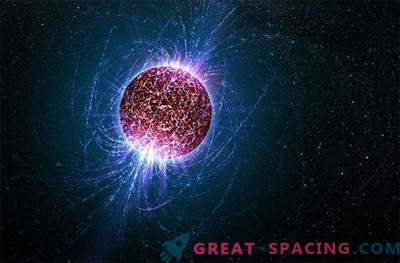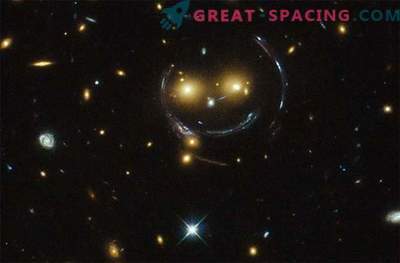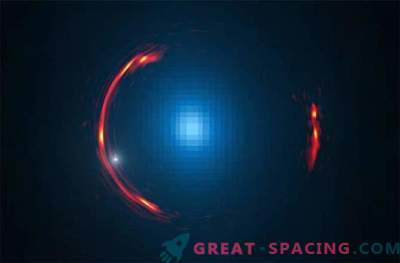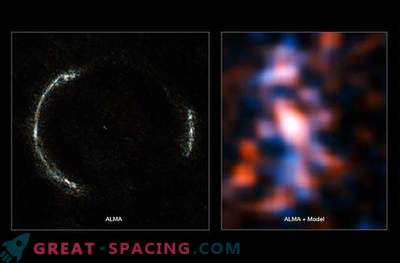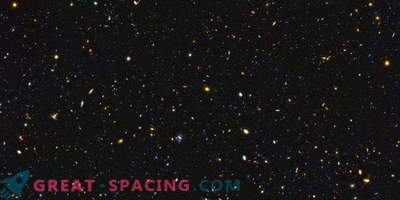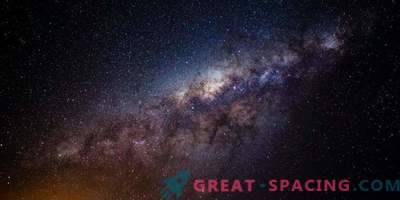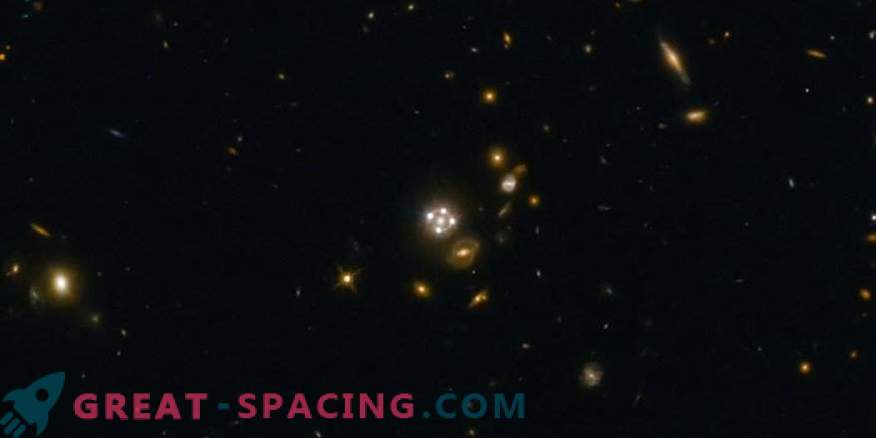
Using the fad in space and time, first described by Einstein, the Hubble Space Telescope also hinted that our theories about the universe are far from complete.
A significant cosmic breakthrough in history was the awareness of Edwin Hubble in 1925 that the universe is not static, but expanding. Astronomers used Hubble, as well as other devices (on earth and in space), to accurately fix this speed. For this, the strangeness of space and time was useful.
A powerful cosmic lensing occurs when light comes from a distant point in the Universe and encounters a massive object in its path. Such “barriers”, like galaxies, make the space-time to bend and deform. This was described by the general theory of relativity. If the alignment is located just between us and a distant light source, then a massive object can create a space-time “lens”, which causes the light to increase and distort in space.
Numerous lensed images and distorted arcs are usually observed during deep space shooting. Hubble used natural lenses to enhance its potential as part of the Frontier Fields project, peering further than optics would allow.
But these natural magnifiers in space-time can be used for other purposes. For example, a recent study tests a fundamental constant that describes the inexorable and accelerated expansion of the Universe. The study was called H0LiCOW. But these lenses are not perfect. That is, from the same remote source (for example, an ancient quasar) can receive light in different ways along different regions of the deformed space-time. Instead of one lens, there are many of them, put together. In this case, Hubble observes the same quasar, but each image passes through different lenses in a different time interval. Here are some examples:

Five lensed quasars and the foreground of the galaxy, studied in the H0LICOW project
Hubble observed two bright quasar, whose highly active galactic nuclei produced a bright shimmer. Using the flicker time delay as a measurement point, the researchers were able to obtain an accurate measurement of space expansion, confirming previous data from the Hubble constant (the number that determines the expansion rate).
“Our method is the easiest way to measure the Hubble constant. After all, only geometry and the general theory of relativity is used here, ”said astronomer Frederick Kurbin of the Federal Polytechnic School of Lausanne in Switzerland.
Following this technique, the researchers measured the constant with an accuracy of 3.8% - this is the most accurate measurement of all. “Such a measurement of the Hubble number is the most worthy present lately,” said project participant Vivien Bonven.
For previous measurements, Cepheids of variable stars were taken to track the distances and obtain the expansion rate. These stars differ in brightness, but very predictably, which makes them great beacons. The new study is consistent with previous Hubble data, only they are more accurate and confirm that the Universe is expanding faster than space models predict. Observations from the Planck Space Observatory, which captures microwave background (relic) radiation, are consistent with universal theories. Planck's measurements represent the ancient universe after the Big Bang, and Hubble’s measurements show its position billions of years later and the speed of expansion. This proves that we do not fully understand how space works.
“Hubble's constant is crucial for modern astronomy, as it expands the boundaries of our understanding of the cosmos. With her help, we will find out whether it consists of dark and ordinary matter or there is something else, ”says lead researcher Sherry Sue from the Max Planck Institute for Astrophysics.


